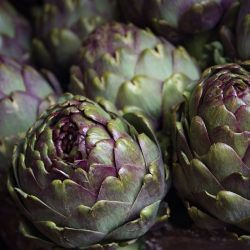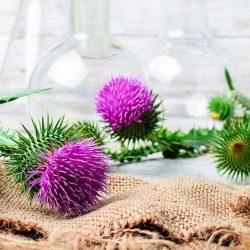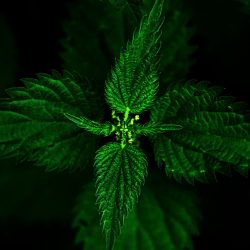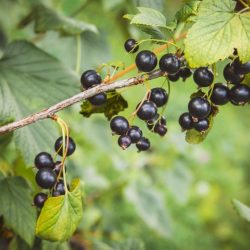Desmodium , plant of hepatic cytolysis , derives its name from the Greek “ desmos ” which means “ link ” or “ bundle ”, and refers to the stamens that meet in a tube at their ends, while Adscendens refers to the properties of the parts. aerials to ascend the trunks of oil palms in damp and shady places. A good mnemonic to remember that when the transamines climb, you have to resort to Desmodium adscendens .
A little history
The various properties of desmodium are linked to the leaves of this wild and perennial plant, a liana widely used on several continents in the tropics and subtropics of the planet, such as India or South America. For example, Native American traditional healers in Venezuela use it to treat epilepsy . But it is especially in Africa, especially in the West (from Senegal to the Congo via the Ivory Coast) that it is used intensively in traditional medicine to treat various liver diseases including viral hepatitis . In Ghana, the stems as well as the leaves of desmodium are widely used in the treatment of asthma .
The properties of desmodium were notably discovered by Dr Pierre Tubéry and his wife Anne-Marie in the 1960s during their work (1959-1963) in a dispensary-hospital in Cameroon. It was by learning the surprising results obtained with decoctions of desmodium in the treatment of the icteric phase of viral hepatitis that they conducted their research, in particular in contact with their Cameroonian nurse, François Nkodo , who enabled them to determine. the dosage in this indication. Subsequently, they carried out the botanical identification of the plant at the Museum of Natural History in Paris. We owe to Dr Tubéry for having introduced desmodium in France and for having made it known.
What are the main pharmacological properties of Desmodium leaves?
Hepatoprotective properties:
The hepatoprotective effect of desmodium vis-à-vis hepatotoxic compounds is related to its content of triterpenoid saponosides. According to an in vitro study , soyasaponins I and III, dehydrosoyasagenin I and soyasapogenol E protect liver cells from damage induced by hepatotoxic substances ( carbon tetrachloride ) with normalization of hepatic transaminase levels, mainly TGO (ASAT). This anti-hepatotoxic activity was therefore confirmed in vivo with a decoction of desmodium quantified as d-pinitol .
The effect of desmodium was finally evaluated in a clinical study carried out on 50 patients with viral hepatitis who received treatment with desmodium (3 times / day) for 45 days. The results show an efficacy of desmodium on the evolution of myalgia, jaundice, transaminases, bilirubin and the negativation of the Hbs antigen in half of the cases in 45 days in the context of viral hepatitis B.
Antioxidant, anti-free radical properties:
A study has also demonstrated the protective effect against oxidative stress of a hydroalcoholic extract of Desmodium adscendens on hepatic and renal cells.
Anti-inflammatory, antiallergic, anti-asthma, anti-spasmodic properties:
These properties are related to several identified mechanisms such as arachidonic acid metabolites inhibited by an extract of Desmodium adscendens (this action involves an inhibition of NADPH-dependent oxygenation of arachidonic acid by renal cortical microsomes) , the competitive decrease in vivo in the concentration and release of histamine and dose-dependent spasmogens in the intestine and lungs as well as the decrease in physiological reactions to allergic stimuli.
Its activity of inhibiting smooth muscle contractions, in particular respiratory contractions, in reaction to different allergens and antigens, by different synergistic modes of action :
- Modulation of the cyclooxygenase pathway with, among other things, the catalysis of muscle relaxant PGH2 and PGE2 and the production of relaxing prostacyclins.
- In vitro relaxing activity of smooth muscles due in particular to dehydrosoyasaponin I, a powerful specific activator of the opening of calcium-dependent potassium channels, which causes hyperpolarization of the membranes. This leads to relaxation of the bronchi in vivo , which is more progressive due to the intracellular membrane site of action.
Action on the central nervous system:
In vitro , desmodeleganine extracted from desmodium leaves also strongly inhibits monoamine oxidase activity.
Desmodium causes in vivo and at high doses a slowing down of the central nervous system which results in particular in dose-dependent analgesia, a decrease in motor activity and exploratory behavior, a decrease in the tonic phase of convulsions induced by pentylenetetrazole and kainic acid, and inhibition of the spread of seizures.
In vivo , the ethanolic extract of Desmodium adsendens also exhibits activities similar to those of antipsychotics, with risks of motor side effects (increased catalepsy by haloperidol) appearing only at the highest doses. of the extract.
Are there any precautions for use with Desmodium?
Contraindications:
- In the absence of data, desmodium is not recommended for pregnant or breastfeeding women.
- Contraindicated in case of progressive systemic diseases as well as autoimmune diseases if taken long term (possibility of hepatotoxic effects).
Precautions for use:
- Not recommended for children under 12 years old.
Drugs interactions :
- Desmodium interacts in particular with steroids and immunosuppressants.
- Low activity on CYP2B1 and 2B2, inhibitor of CYP2E (avoid with disulfiram)
- Desmodium adscendens extracts inhibit CYP2E isozymes, and induce CYP2B1 / 2B2 isozymes
How to take Desmodium and in what dosage?
Dry form:
- As a food supplement in the form of standardized extract of fresh plant or dry extract in capsules .
Liquid form:
- Standardized fluid extract of fresh plant : 5 ml, 2 times a day in water.
- Hydroalcoholic fluid extract : 30 to 50 drops, 3 times a day in water.
- Decoction: 5 to 10 g to boil in 1L of water, several cups per day.
Desmodium in masterly preparation of standardized extracts in liquid form (EPS)
In association with milk thistle :
In hepatoprotection, hepatitis and elevated liver enzymes.
In combination with turmeric and piloselle :
For detoxification and hepatorenal protection.
In association with plantain and ginkgo biloba :
Against asthma or recurrent asthmatic bronchitis.
In combination with astragalus and orthosiphon :
In nephroprotection, renal failure.
Medical bibliographic sources and clinical trials :
- Addy M. et al., An extract of Desmodium adsendens inhibits NADPH-dependant oxygenation of arachidonic acid by kidney cortical microsomes; Phytother Res., 1992
- McManus O.B. et al., An activator of calcium-dependent potassium channels isolated from a medicinal herb, Biochemistry, 1993
- Miyao H. et al., Kaikasaponin III and soyasaponin I, major triterpene saponins of Abrus cantoninensis, act on GOT and GPT : influence on transaminase elevation of rat liver cells concomitantly exposed to CC14 for one hour, Planta Med., 1998
- Addy M. et al., Dose-response effects of Desmodium adscendens aqueous extract on histamine response, content and anaphylactic reactions in the guinea pig, J Ethnoparmacol., 1986
- François C. et al., Safety of Desmodium adscendens extract on hepatocytes and renal cells. Protective effect against oxidative stress, J Intercult Ethnopharmacol., 2015
- Addy M. et al., Some secondary plant metabolites in Desmodium adscendens and their effects on arachidonic acid metabolism, Prostaglandins Leukot Essent Fatty Acids, 1992







